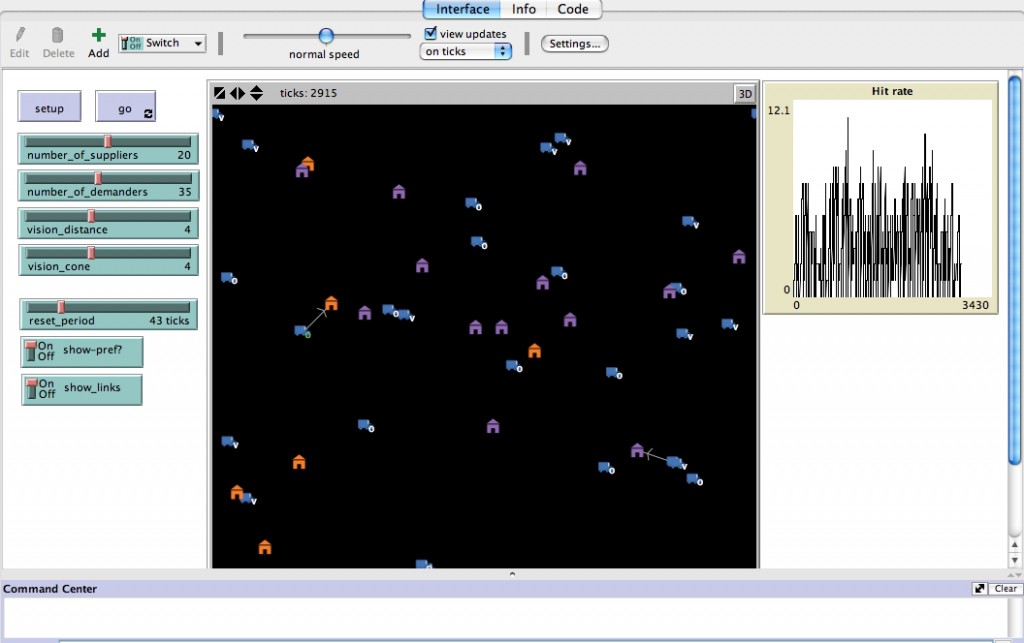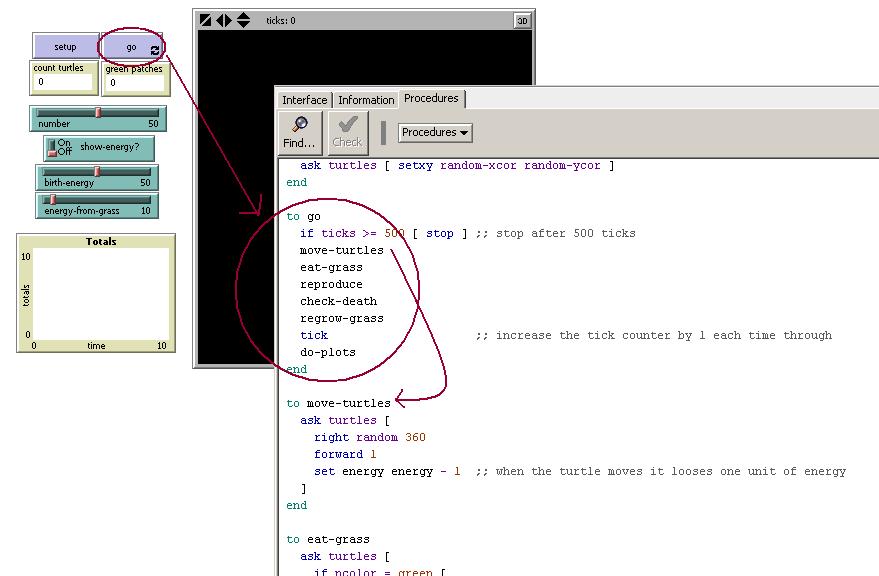
We developed an agent-based simulation framework, Agents.jl, 12 that fulfills the aforementioned tasks. Such a framework also separates the tasks of defining a model from running it, collecting and merging model outputs, and analysing the results. A well-designed agent-based simulation framework has taken care of the largest performance bottlenecks one may encounter as much as possible. ABMs can be computationally heavy programs, and implementing one from scratch that “works” is seldom “fast” the first time around.

A well-defined and simple framework fosters mutual understanding between collaborators. This is especially important at present, since increasingly complex models are being developed in collaboration, where each party focuses on a single component of the model.
NETLOGO COUNT CODE
Reducing the amount of code needed to write an ABM, and providing a standardized model template, makes it easier for model developers to define models, explore parameters, and collect data, as well as enabling the target audience to better understand, compare, reproduce, and modify models ( Figure 1). This removes any “extensions library” requirement from Agents.jl, which is paramount in many other tools.Īn agent-based modeling framework helps define a general structure for ABMs. Agents.jl also integrates excellently with the entire Julia ecosystem, including interactive applications, differential equations, parameter optimization, and so on. We find that Agents.jl is not only the most performant but also the least complicated software, providing the same (and sometimes more) features as the competitors with less input required from the user.
NETLOGO COUNT SOFTWARE
We compare our software with some of the most popular ABM software in other programming languages. Here we present Agents.jl, a Julia-based software that provides an ABM analysis platform with minimal code complexity.

Since agent-based models are not described by simple and concise mathematical equations, the code that generates them is typically complicated, large, and slow. It is an integral method for modeling and simulating complex systems, such as socio-economic problems. All subjects Allied Health Cardiology & Cardiovascular Medicine Dentistry Emergency Medicine & Critical Care Endocrinology & Metabolism Environmental Science General Medicine Geriatrics Infectious Diseases Medico-legal Neurology Nursing Nutrition Obstetrics & Gynecology Oncology Orthopaedics & Sports Medicine Otolaryngology Palliative Medicine & Chronic Care Pediatrics Pharmacology & Toxicology Psychiatry & Psychology Public Health Pulmonary & Respiratory Medicine Radiology Research Methods & Evaluation Rheumatology Surgery Tropical Medicine Veterinary Medicine Cell Biology Clinical Biochemistry Environmental Science Life Sciences Neuroscience Pharmacology & Toxicology Biomedical Engineering Engineering & Computing Environmental Engineering Materials Science Anthropology & Archaeology Communication & Media Studies Criminology & Criminal Justice Cultural Studies Economics & Development Education Environmental Studies Ethnic Studies Family Studies Gender Studies Geography Gerontology & Aging Group Studies History Information Science Interpersonal Violence Language & Linguistics Law Management & Organization Studies Marketing & Hospitality Music Peace Studies & Conflict Resolution Philosophy Politics & International Relations Psychoanalysis Psychology & Counseling Public Administration Regional Studies Religion Research Methods & Evaluation Science & Society Studies Social Work & Social Policy Sociology Special Education Urban Studies & Planning BROWSE JOURNALSĪgent-based modeling is a simulation method in which autonomous agents interact with their environment and one another, given a predefined set of rules.


 0 kommentar(er)
0 kommentar(er)
